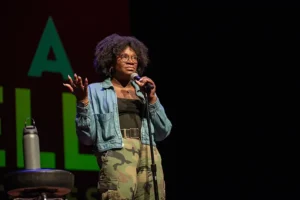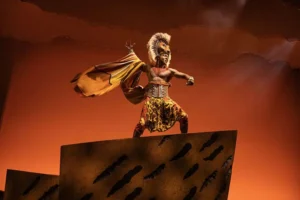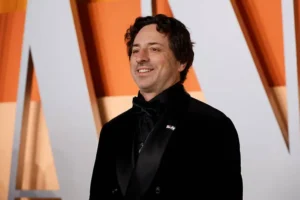Sacramento’s oldest museum has enlisted the expertise of Agustín Arteaga to help guide the Crocker Art Museum toward a more expansive and innovative future.

Arteaga, the newly appointed Mort and Marcy Friedman director and CEO of the Crocker, began his tenure on July 1. Arteaga had previously served as a director in art museums in Mexico and, most recently, Dallas. In this role, he is overseeing a 140-year-old nonprofit institution and the oldest museum in the western United States. He took over the role following the retirement of Lial Jones, who had been at the helm for 25 years.
While Arteaga keeps some surprises under wraps, he teased one upcoming moment that speaks to the serendipity of his career: “Someone asked me, ‘Are you bringing the Two Fridas?’” Arteaga said, referring to iconic artist Frida Kahlo and two of her paintings that were a part of the “Frida: Beyond the Myth” exhibit that Arteaga curated last year. “I may not bring the two Fridas, but I may bring something very exciting very soon.”
Solving Sacramento spoke with Arteaga about his vision for Sacramento’s oldest museum, his personal approach to art and the big ideas he hopes will define his legacy.
What’s the last piece of art you saw that really moved you?
That’s a very difficult question, because I’m very often moved by art. Art is a way to connect you with a moment in life that may have occurred just yesterday or long, long ago. … It’s a gateway to take a sneak peek into what people were thinking, feeling, doing and how that establishes a dialogue with your way of perceiving the world.
Should art comfort us or challenge us?
I think that art does everything. Art can provide you with beauty and softness and light, and it makes you feel good. But it’s not only about feeling good.
Sometimes it’s going to shake you. Sometimes it’s going to make you open your eyes and realize that there’s something you haven’t seen or thought about. That is as powerful as rejoicing in the sublime.
Now that you’ve had time to experience Sacramento, how do you see its culture reflected in the Crocker’s future?
One thing that I’m pretty impressed by is how diverse Sacramento is. I was surprised by how many Europeans, especially Eastern Europeans, are here, and all the diversity of people from Asia, from India and Pakistan.
I always feel that the museum can provide you the opportunity to learn about others, but also provide an opportunity to learn about yourself. Many people in these communities have been here for generations, and they probably have lost deep knowledge about their own roots. The collections in the museum and the exhibits that we present may help them reconnect with that past.
Any hidden gems in the museum storage you’re hoping to bring into the spotlight?
It’s actually too soon to get to that point, but I want to tell you something: We have a big challenge with the storage.
We’re working on making a new storage facility. I did visit our storage spaces, and I really couldn’t get to see anything. It’s impossible to move things. You’re not even able to open a rack to see what’s hanging. But I’m very excited that we’re working on improving that.
You’ve said that you value accessibility over exclusivity. How do you make that a reality?
There’s been this idea spread around that museums are for the elite, like private clubs, but I think that every museum director and every staff member across the country, likely around the world, is working against that.
I talk to people all the time. I don’t have a car, so I ride Ubers. Every time I get into an Uber, I ask the driver if they’ve been to the Crocker. A lot of the time, they haven’t, and it’s because they don’t know if they belong.
We don’t want you to feel like you have to know about art to come in. We don’t want you to feel like you have to dress up or behave in a certain way. What we really want is to make people feel at home.
How should museums evolve in the age of AI, immersive exhibitions and digital collections?
We live in a moment where AI is generating art, whether we like what we see or not, whether it will stay, we’ll have to see.
We have some beautiful immersive art installations already at the Crocker. If you walk through the stairways at the entrance, you’ll see this beautiful loop of video. It’s talking about our lives, our memories, our origins, while using very interesting techniques.
Am I in favor of every immersive experience? Perhaps not. Some things become entertainment more than an art experience. … It’s a tool still to be explored.
You’re known for mentoring young curators. What’s one lesson you hope to pass on?
You have to be fearless. You have to believe in what you think is right. You have to try to achieve things you might think you’re not able to do. My job is to positively challenge my curators to explore their full capacities. Think big. You don’t always get to do everything, but ambition matters.
Do you have a personal ritual when visiting art exhibitions?
As a professional, you always go with a critical eye, you ask, “Is the lighting right?” Are the labels clear? Is the wall color appropriate?” But when I go just to enjoy art, I try to clean my mind and say, “I’m not working. I just want to enjoy.” That’s when I do close looking, when the art really comes to you.
I prepare by learning a little about the artist before I go, but not too much. I don’t want to come in with a preconceived idea. I come with an open mind. I read everything. And I try to build my eye, not just learn facts.
When your time at the Crocker eventually ends, what is one sentence you hope people will use to describe your legacy?
If people enjoy being at the museum, it’s because they feel comfortable. They felt welcomed. And if they learned something, it means we provided them with the tools and the resources to discover the magic of art.
This story is part of the Solving Sacramento journalism collaborative. This story was funded by the City of Sacramento’s Arts and Creative Economy Journalism Grant to Solving Sacramento. Following our journalism code of ethics, the city had no editorial influence over this story. Our partners include California Groundbreakers, Capital Public Radio, Hmong Daily News, Outword, Russian America Media, Sacramento Business Journal, Sacramento News & Review and Sacramento Observer. Sign up for our “Sac Art Pulse” newsletter here.
By Chris Woodard















